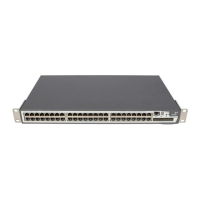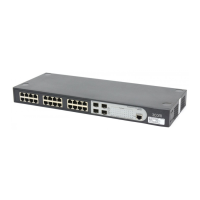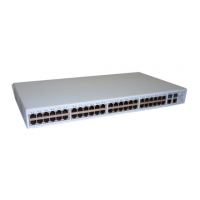4-19
z Configuring ASBR route summarization for imported routes.
Follow these steps to configure ABR route summarization:
To do... Use the command... Remarks
Enter system view
system-view
—
Enter OSPF view
ospf [ process-id [ router-id
router-id ] ]
—
Enter area view
area area-id
—
Enable ABR route
summarization
abr-summary ip-address mask
[ advertise | not-advertise ]
Required
This command takes effect only
when it is configured on an
ABR. By default, this function is
disabled on an ABR.
Follow these steps to configure ASBR route summarization:
To do... Use the command... Remarks
Enter system view
system-view
—
Enter OSPF view
ospf [ process-id [ router-id
router-id ] ]
—
Enable ASBR route
summarization
asbr-summary ip-address mask
[ not-advertise | tag value ]
Required
By default, summarization of
imported routes is disabled.
Configuring OSPF to Filter Received Routes
Follow these steps to configure OSPF to filter received routes:
To do... Use the command... Remarks
Enter system view
system-view
—
Enter OSPF view
ospf [ process-id [ router-id
router-id ] ]
—
Configure to filter the
received routes
filter-policy { acl-number | ip-prefix
ip-prefix-name | gateway
ip-prefix-name } import
Required
By default, OSPF does not filter
received routing information.
OSPF is a dynamic routing protocol based on link state, with routing information hidden in LSAs.
Therefore, OSPF cannot filter any advertised or received LSA. In fact, the filter-policy import
command filters the routes calculated by SPF algorithm (namely, routes in the OSPF routing table); only
the routes passing the filter can be added to the routing table.

